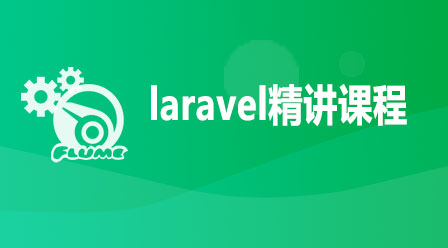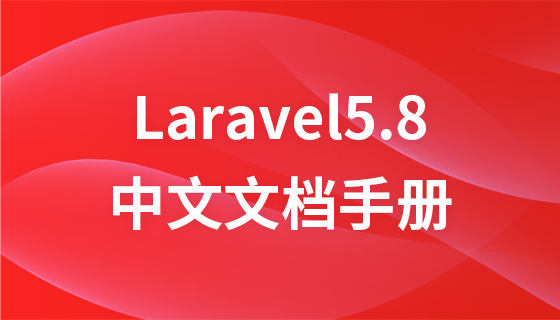
Laravel应用中的SOLID原则:构建更健壮的应用
干净、易于维护的软件设计,其基石在于SOLID原则。这五个原则——单一职责原则(SRP)、开放封闭原则(OCP)、Liskov替换原则(LSP)、接口隔离原则(ISP)和依赖反转原则(DIP)——帮助开发者构建可扩展、可测试且易于维护的系统。本文将结合Laravel框架,深入探讨每个原则,并提供实际案例。
1. 单一职责原则 (SRP)
一个类应该只有一个引起它变化的原因。
在Laravel中,控制器常常承担过多的职责:处理请求、执行业务逻辑以及与模型交互。这违反了SRP。让我们看看如何改进。
反面案例:
<code class="php">class UserController extends Controller
{
public function store(Request $request)
{
$validated = $request->validate([
'name' => 'required',
'email' => 'required|email',
'password' => 'required|min:8',
]);
$user = new User();
$user->name = $validated['name'];
$user->email = $validated['email'];
$user->password = bcrypt($validated['password']);
$user->save();
return response()->json(['message' => 'User created successfully']);
}
}</code>改进后的代码:
我们将验证和用户创建委托给独立的类:
<code class="php">class UserController extends Controller
{
public function store(CreateUserRequest $request, UserService $userService)
{
$userService->create($request->validated());
return response()->json(['message' => 'User created successfully']);
}
}
// CreateUserRequest.php
class CreateUserRequest extends FormRequest
{
public function rules()
{
return [
'name' => 'required',
'email' => 'required|email',
'password' => 'required|min:8',
];
}
}
// UserService.php
class UserService
{
public function create(array $data)
{
$data['password'] = bcrypt($data['password']);
return User::create($data);
}
}</code>现在控制器通过委托职责来遵守SRP。
2. 开放封闭原则 (OCP)
软件实体应该对扩展开放,对修改封闭。
假设您正在构建一个报表生成器。起初只需要生成PDF报表,但之后需要添加CSV和Excel支持。让我们看看如何应用OCP。
实现:
定义报表生成接口:
<code class="php">interface ReportGenerator
{
public function generate(array $data): string;
}</code>为不同格式创建实现:
<code class="php">class PdfReportGenerator implements ReportGenerator
{
public function generate(array $data): string
{
// 使用类似Dompdf的库
return 'PDF报表内容';
}
}
class CsvReportGenerator implements ReportGenerator
{
public function generate(array $data): string
{
// 生成CSV内容
return 'CSV报表内容';
}
}</code>使用依赖注入来支持新的格式:
<code class="php">class ReportService
{
private ReportGenerator $reportGenerator;
public function __construct(ReportGenerator $reportGenerator)
{
$this->reportGenerator = $reportGenerator;
}
public function generateReport(array $data): string
{
return $this->reportGenerator->generate($data);
}
}</code>通过注入新的ReportGenerator实现,可以在不修改现有代码的情况下扩展功能。
3. Liskov替换原则 (LSP)
子类型必须能够替换其基类型。在Laravel中,这通常适用于扩展基类或实现接口。例如,确保我们的支付方式遵守LSP。
实现:
定义支付接口:
<code class="php">interface PaymentMethod
{
public function charge(float $amount): bool;
}</code>实现具体的支付方式:
<code class="php">class StripePayment implements PaymentMethod
{
public function charge(float $amount): bool
{
// 调用Stripe API
return true;
}
}
class PaypalPayment implements PaymentMethod
{
public function charge(float $amount): bool
{
// 调用PayPal API
return true;
}
}</code>在服务中使用基类型:
<code class="php">class PaymentService
{
private PaymentMethod $paymentMethod;
public function __construct(PaymentMethod $paymentMethod)
{
$this->paymentMethod = $paymentMethod;
}
public function processPayment(float $amount)
{
$this->paymentMethod->charge($amount);
}
}</code>可以用PaypalPayment替换StripePayment,而无需更改PaymentService的逻辑。
4. 接口隔离原则 (ISP)
客户端不应该被迫依赖于它们不使用的方法。在Laravel中,使用大型接口可能很诱人。让我们看看如何改进它们。
反面案例:
<code class="php">interface CrudOperations
{
public function create(array $data);
public function read(int $id);
public function update(int $id, array $data);
public function delete(int $id);
}</code>如果某些实体不支持所有CRUD操作怎么办?例如,日志可能不会更新或删除。
改进后的代码:
将接口分解成更小的契约:
<code class="php">interface Creatable
{
public function create(array $data);
}
interface Readable
{
public function read(int $id);
}</code>现在只实现相关的接口:
<code class="php">class LogService implements Readable, Creatable
{
public function create(array $data)
{
// 创建日志
}
public function read(int $id)
{
// 读取日志
}
}</code>这确保了类只依赖于它们实际使用的方法。
5. 依赖反转原则 (DIP)
高层模块不应该依赖于低层模块。两者都应该依赖于抽象。
在Laravel中,通常使用依赖注入和服务容器来实现这一点。
反面案例:
<code class="php">class NotificationService
{
public function sendEmail(string $to, string $message)
{
// 发送邮件逻辑
}
}</code>NotificationService直接依赖于电子邮件实现。
改进后的代码:
创建一个抽象:
<code class="php">interface NotificationChannel
{
public function send(string $to, string $message);
}</code>实现多个通道:
<code class="php">class EmailChannel implements NotificationChannel
{
public function send(string $to, string $message)
{
// 发送邮件逻辑
}
}
class SmsChannel implements NotificationChannel
{
public function send(string $to, string $message)
{
// 发送短信逻辑
}
}</code>注入抽象:
<code class="php">class NotificationService
{
private NotificationChannel $channel;
public function __construct(NotificationChannel $channel)
{
$this->channel = $channel;
}
public function notify(string $to, string $message)
{
$this->channel->send($to, $message);
}
}</code>现在,交换通知通道不需要更改NotificationService的逻辑。
结论
将SOLID原则应用于您的Laravel应用程序可以增强其结构和可维护性。通过仔细设计类和接口,您可以创建更易于测试、扩展和调试的系统。拥抱这些原则,您的代码库将会更加蓬勃发展!
以上就是了解Laravel应用中的坚实原则的详细内容,更多请关注php中文网其它相关文章!

每个人都需要一台速度更快、更稳定的 PC。随着时间的推移,垃圾文件、旧注册表数据和不必要的后台进程会占用资源并降低性能。幸运的是,许多工具可以让 Windows 保持平稳运行。




Copyright 2014-2025 https://www.php.cn/ All Rights Reserved | php.cn | 湘ICP备2023035733号